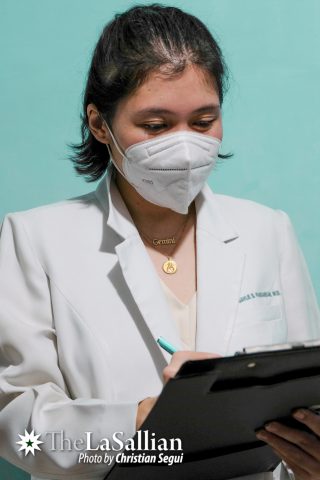Around the world, healthcare systems are being overwhelmed by the public health emergency that has been precipitated by the pandemic. Resources that have, in the past, been used to treat various other illnesses are now being redirected to fight against the spread SARS-CoV-2.
As of October 22, the Philippines has a total of 365,799 COVID-19 cases, with 183 out of 1,272 facilities in danger of full occupancy. With the number of cases increasing across the nation, the virus continues to disrupt the services for people living with noncommunicable diseases. Individuals suffering from cancer, cardiovascular disease, hepatitis and other ailments may find themselves at odds with the healthcare system as medical centers are converted into COVID-19 treatment facilities. As healthcare workers struggle to provide assistance to patients, proper interventions need to be implemented for the health sector to meet the growing needs of the public.

Dwindling resources
According to Dr. Raymund Rosales, a full professor at the University of Santo Tomas Faculty of Medicine and Surgery who is also the Editor in Chief of the University of Santo Tomas’ Journal of Medicine, “Progress in research and development of a vaccine against COVID-19 is relatively fast compared to other diseases which have caused recent epidemics.” Although vaccine production is a multistage process that can take several years before reaching public distribution, several strategies are currently being employed to accelerate procedures.
Rosales contrasts the vaccine development between the H1N1 flu virus or the swine flu vaccine—the most rapidly developed vaccine because of an already established influenza vaccine technology—and the vaccines for the severe acute respiratory syndrome (SARS) and Zika virus, which were not completed as those epidemics ended before their vaccines could be produced. However, even with the pace at which COVID-19 vaccines are being developed, Rosales emphasizes, “There are still challenges that developers might face such as optimization of the antigen design, testing and elaborate safety monitoring for possible adverse effects.”
The COVID-19 pandemic has severely disrupted the social order as Rosales elaborates that treatment facilities dedicated for other illnesses have been converted to COVID-19 centers to accommodate more patients; vaccination campaigns have also been halted due to the risk of outbreaks. Although it is evident that other ailments were displaced by COVID-19, Rosales assures that both the government and private sector are being mobilized to reinforce the healthcare delivery system for other diseases and to allocate resources where needed. He explains that the government has taken steps to resolve this issue by “looking for regional hospitals they can tap to accommodate COVID-19 patients from Metro Manila should bed capacity in NCR reach critical levels.”
Increasing demands
A sense of imbalance between public and private medical care exists within the Philippine healthcare system as inadequate and hasty practices in public health facilities diminish the trust patients have towards the health system. Private hospitals are presumed to provide patients with higher quality services, but Rosales assures that the “same quality of care is being employed in both public and private hospitals in handling COVID and non-COVID patients.” He explains that medical attention is administered by having designated wards for COVID and non-COVID patients with strictly-implemented physical distancing, isolation, and quarantine measures. Patients with stable medical conditions and the elderly patients have also begun to turn to teleconsultations offered by government and private institutions.
Consequently, the pandemic has also introduced bleak circumstances that may influence an individual’s mental health. Stressors, such as the need for financial security, lack of physical comfort, and the risk of infection, add to the difficulties of living in this period of crisis. Rosales expresses that even our own frontliners have developed anxiety and depression due to current circumstances. Because of this, strategies such as psychoeducation and virtual consultation services are made available and easily accessible for patients. He advises that if individuals experience symptoms that pose a threat and danger to oneself and others, they should immediately seek help and go to the nearest hospital.
While COVID-19 forces a diversion of resources, continuity of care for non-communicable and chronic diseases should be made essential to mitigate existing disparities. In order to sustain the distribution of medical aid, and to have a well-prepared health response, governments should reconcile the ever-growing gap between those being treated for COVID-19 and those who have other medical concerns.
